Australian Property
Market Outlook
November 2025
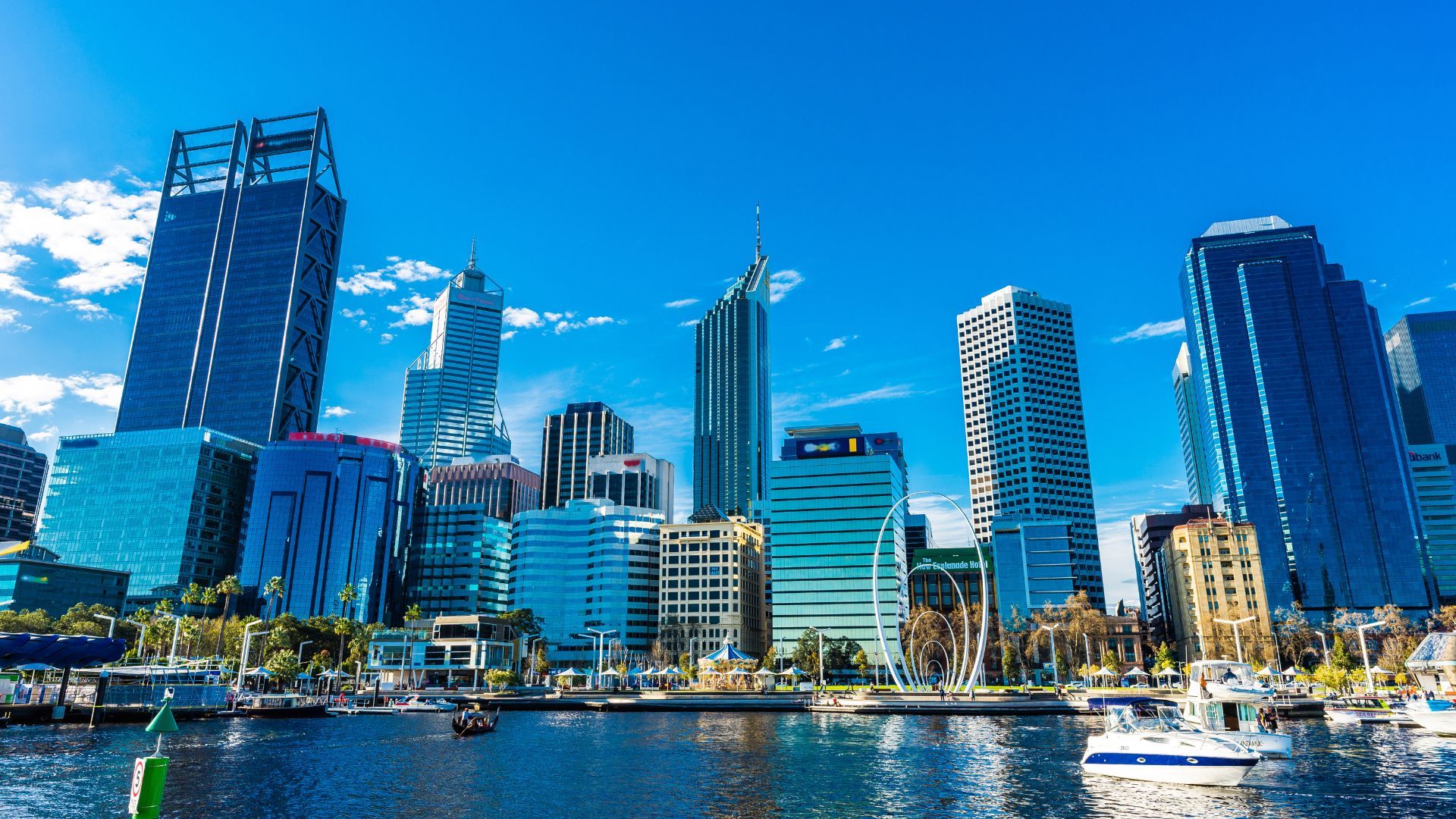
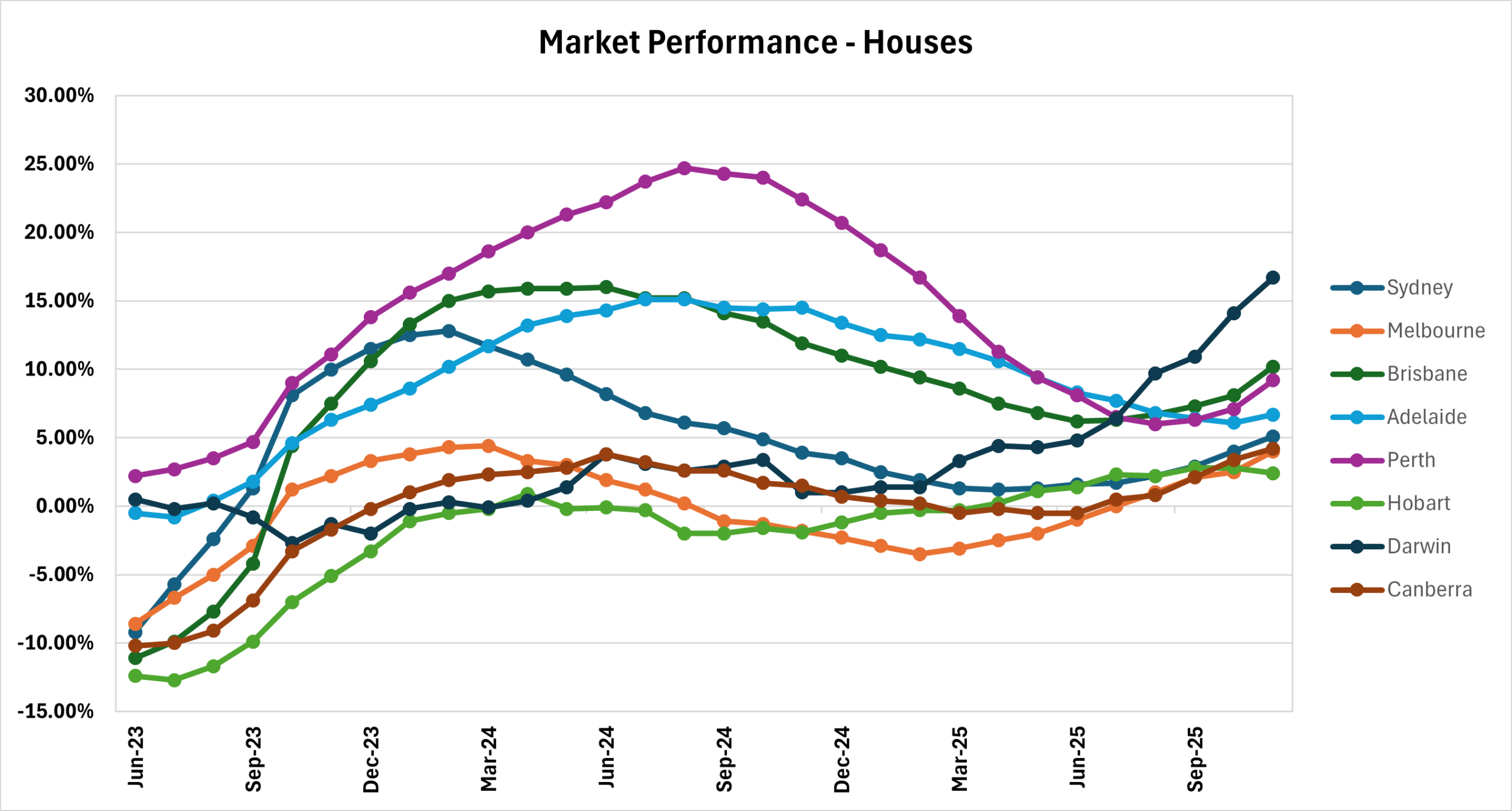
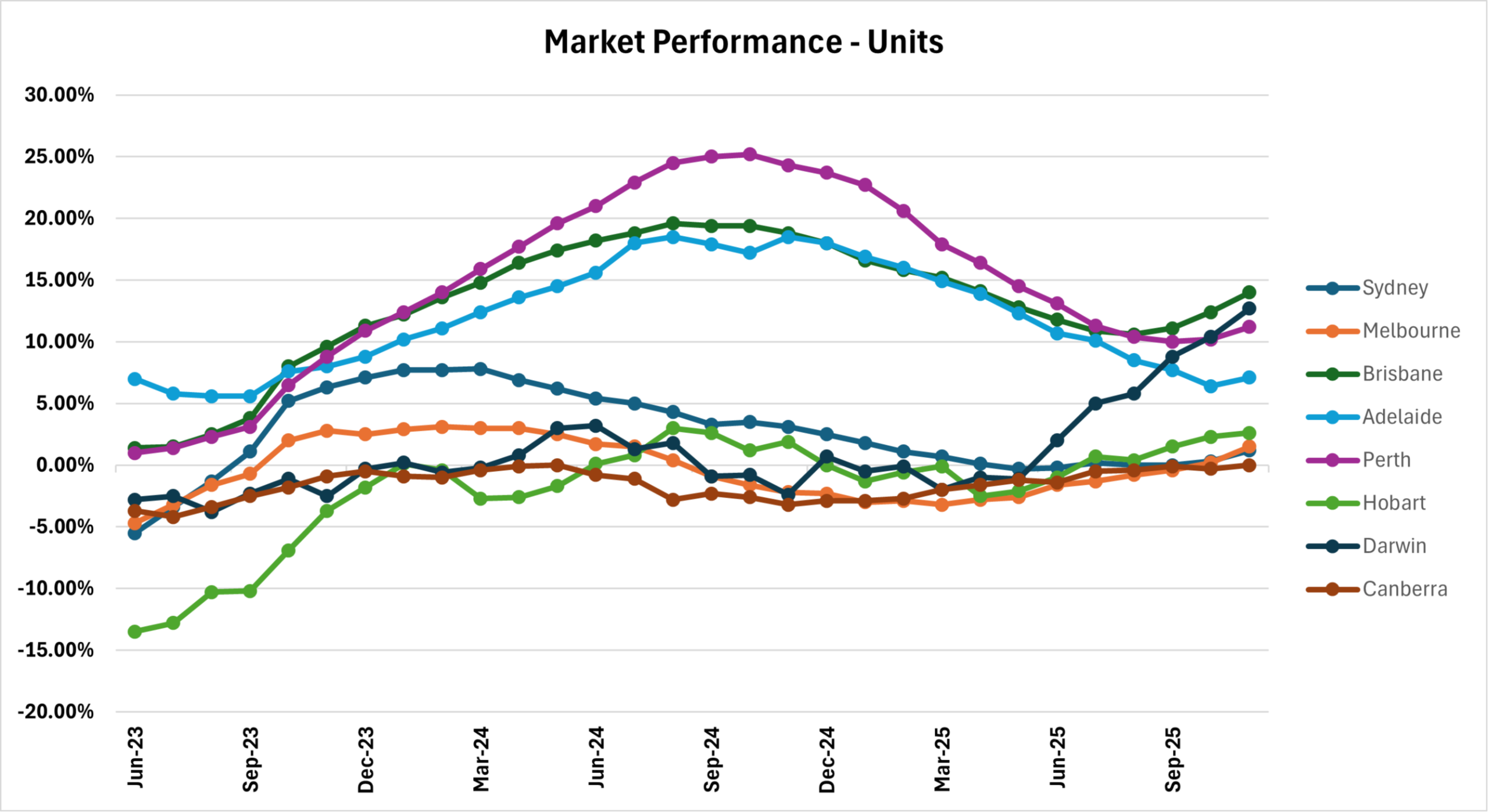
Price Trend Line = Houses v Units
The graphs above represent a trend line of the median price performance at capital city level. Source = CoreLogic. Note the above graphs don’t represent ‘prices’ but show ‘price changes’ over time.
Houses – Over the past month, Perth led the charge for house price growth, recording a 1.9% increase, closely followed by Brisbane at 1.8%. Adelaide held steady with a solid 1.4% rise, while Darwin posted a 1.3% gain. Melbourne showed a 0.9% increase, edging ahead of Sydney at 0.6%, and Hobart delivered a modest 0.5% lift. All capitals remained in positive territory, reinforcing the ongoing strength of the housing market as buyer competition continues through the spring selling season.
Units – Unit performance was stronger in most markets over the past month with Darwin again taking top spot at 2.2%, followed by Brisbane at 1.9% and Perth at 1.8%. Sydney (0.8%), Melbourne (0.9%), Adelaide (1.3%), and Canberra (0.1%) posted more moderate gains, while Hobart was the only capital to see a slight dip at –0.2%. With unit prices generally growing at a faster pace than houses in many cities, this points to renewed demand for more affordable, lower-maintenance options, particularly in high-priced east-coast markets.
FORECAST - From an outlook perspective, we’re now on the final stretch toward year-end, with roughly six weeks of active buying left before banks, agents, and solicitors wind down for Christmas. The market remains highly nuanced - properties under $1 million are still moving quickly, often selling within a week of hitting the market, while those above that threshold show a mixed performance. Well-priced homes with sought-after features are attracting strong competition and selling above asking, whereas anything with drawbacks is taking longer to shift.
Activity from the Home Guarantee Scheme is starting to ease, and while inflationary pressure continues, the RBA’s decision to hold the cash rate steady has provided some restraint. The number of properties available for purchase have lifted slightly, offering buyers more choice, though quality listings are still commanding premium attention. In Queensland, local government flood zone updates are creating fresh valuation shifts, resulting in many owners seeing a dramatic drop in their values overnight.
Rents - Houses v Units
Once again, please note the graphs below show ‘price changes’ not actual pricing [ eg – even though Darwin looks to be ‘on top’ this means it’s increasing faster than other locations, not that it’s more expensive.] Overall rents look to be stabilising, with very minimal change over the past couple of months. Interestingly, Darwin is experiencing a bit of a spike for houses and units.
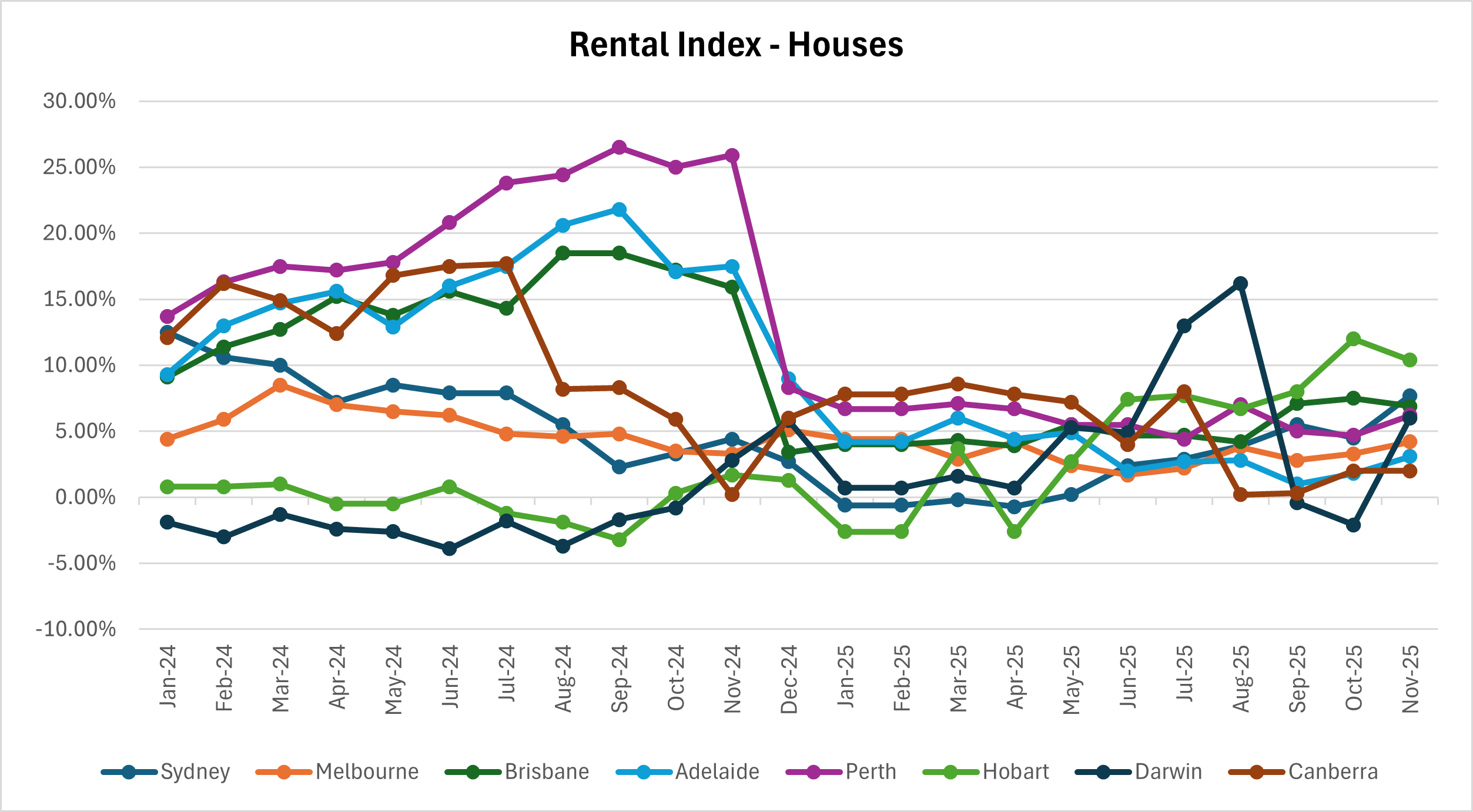
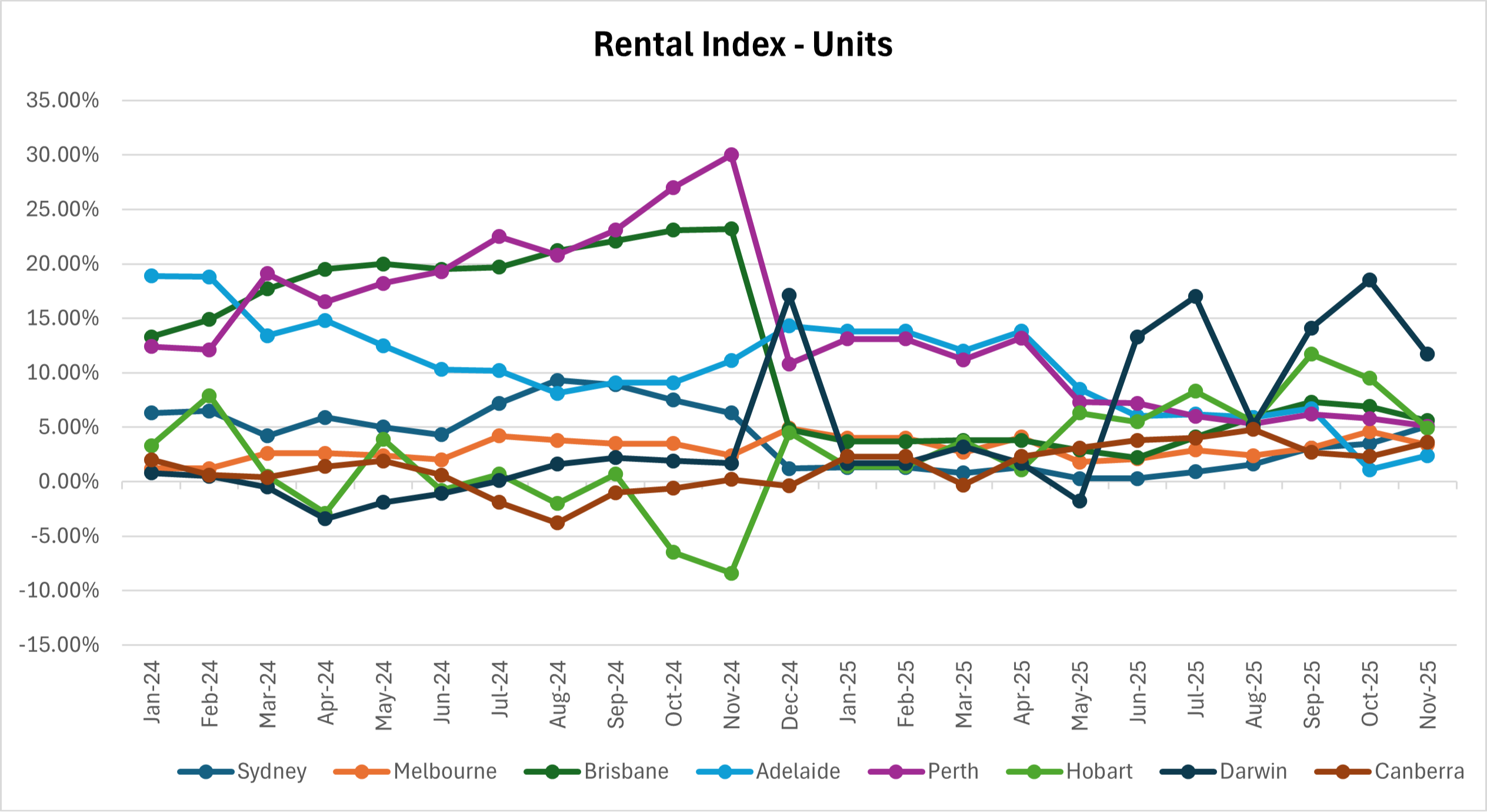
Vacancy Rate
This data is drawn from SQM Research. It represents the total vacancy rate in each major city. A ‘healthy’ rate is around 2.5%. Anything below this means the amount of properties available for rent is not sufficient to meet the amount of people who want to rent in that particular area. As you can see, all areas of Australia need more rental properties (all areas are under 2%), although supply is getting closer to healthier levels in Melbourne and Canberra.
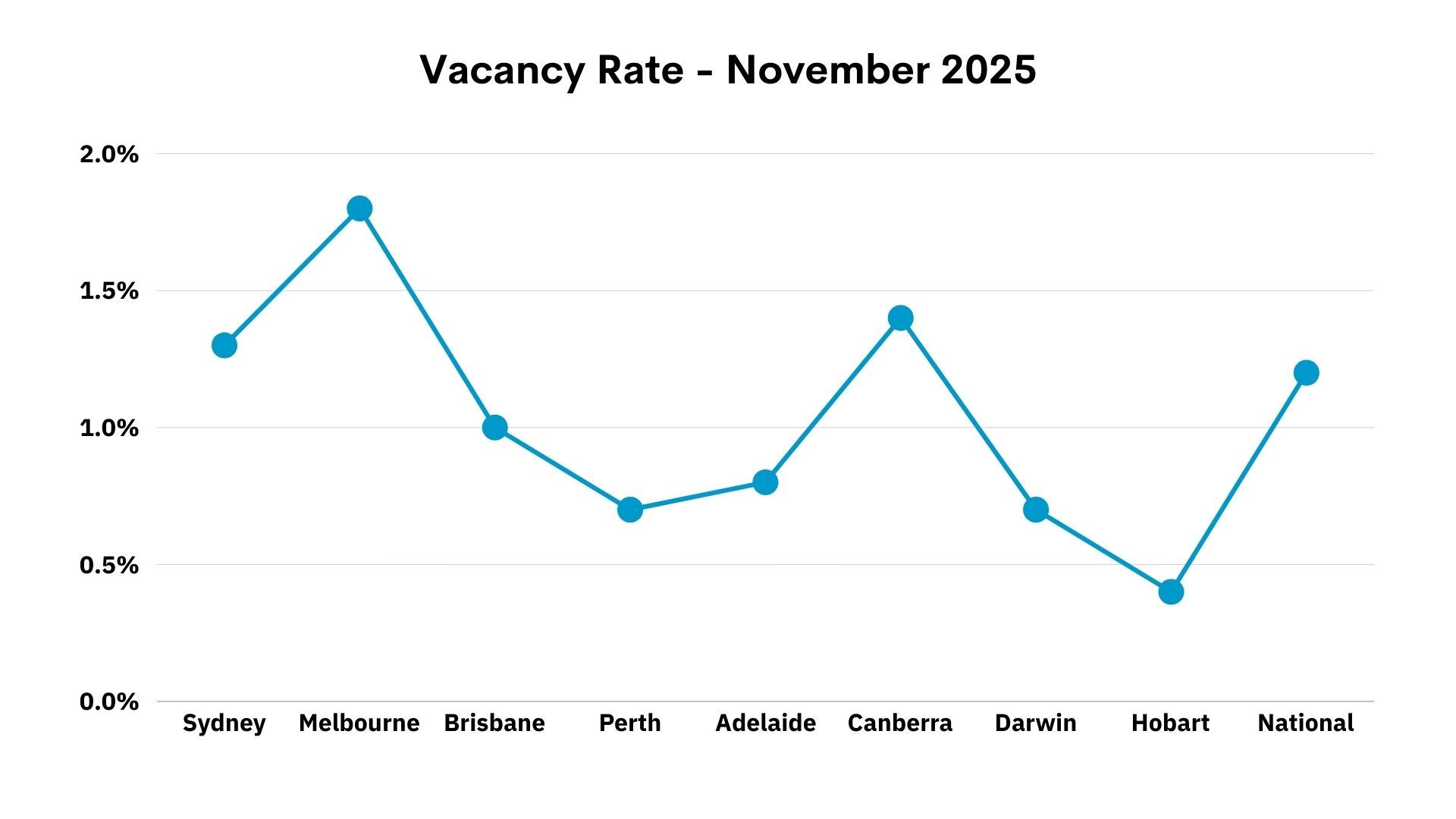
Employment
Employment levels are an important indicator of economic health, and something the RBA monitors closely when deciding what to do with interest rates. This information should also be monitored by property buyers as a leading indicator of locations to avoid or consider for their next purchase.
The sweet spot for a good level of unemployment – where there’s enough jobs for those who want them - will hover between 4 and 5% depending on the rate of jobs turning over.
Anything below 4% would be considered to be low unemployment and would suggest a strong jobs market, attracting workers which increases demand for housing and pushes capital growth and rental returns upwards.
Anything in the 4.5% and upwards would reflect high unemployment which will indicate economic struggles, leading to weaker property price growth and eventually declines.

| New South Wales | 4.30% |
| Victoria | 4.70% |
| Queensland | 4.20% |
| South Australia | 4.50% |
| Western Australia | 4.30% |
| Tasmania | 4.30% |
| Northern Territory | 4.20% |
| Australian Capital Territory | 4.20% |
| Australia | 4.50% |
Population Growth
This graph shows the change in population by State over the last reporting period. The data includes changes caused by both overseas migration and also where Australians are moving from one state to the other. Overall Australia had 667,000 migrant arrivals in 2023 -2024, a slight decrease over the previous 2022-2023 year of 739,000.
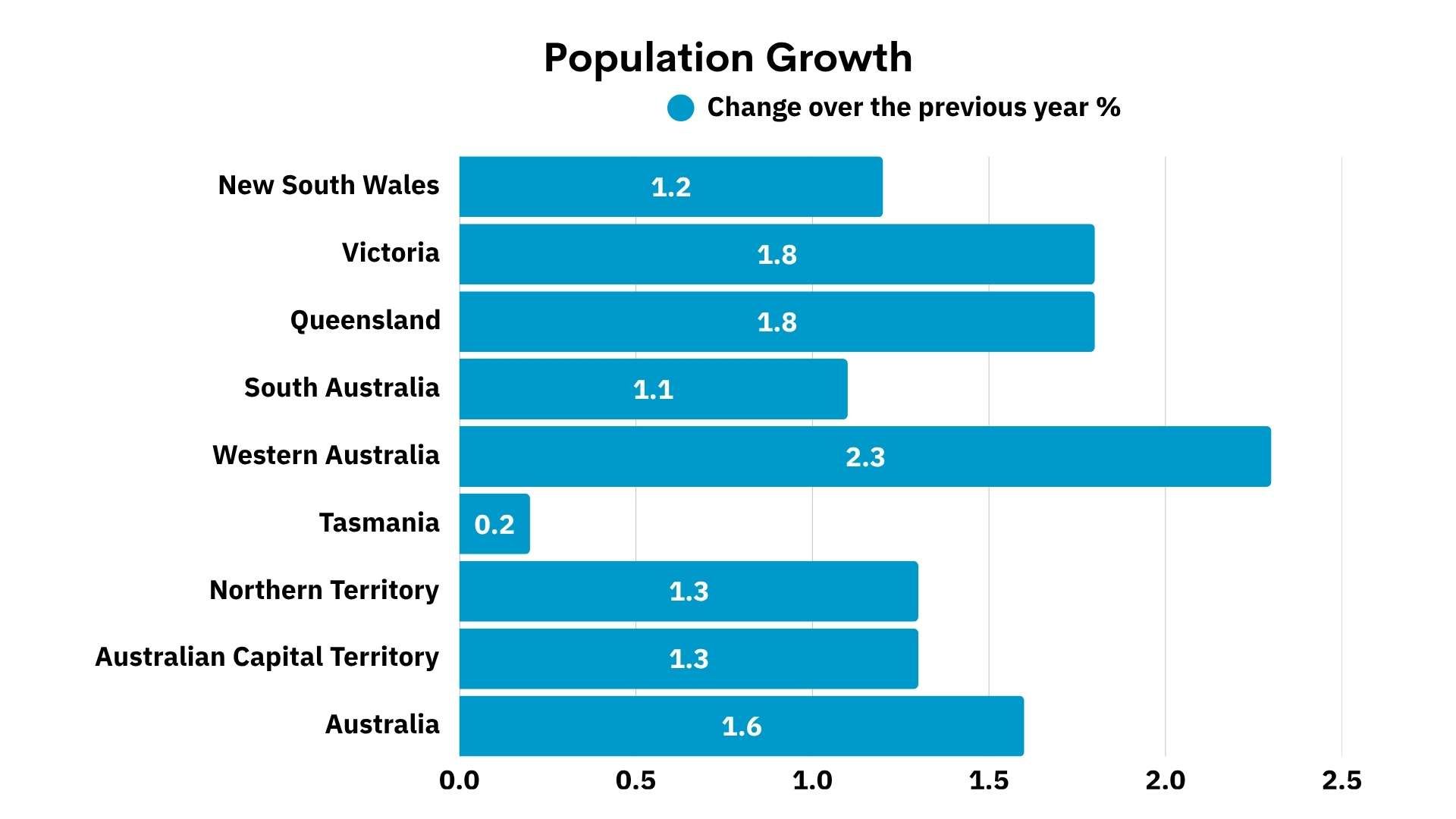
Building Approvals
The graphs below show the monthly dwellings approved in each State and Australia-wide, and also the percentage change. In 2024, the Australian Federal Government announced a target of delivering 1,200,000 homes by 2029 and to achieve this we need to build 240,000 dwellings (houses and units) per year. As you can see, we’re falling drastically behind on this target.
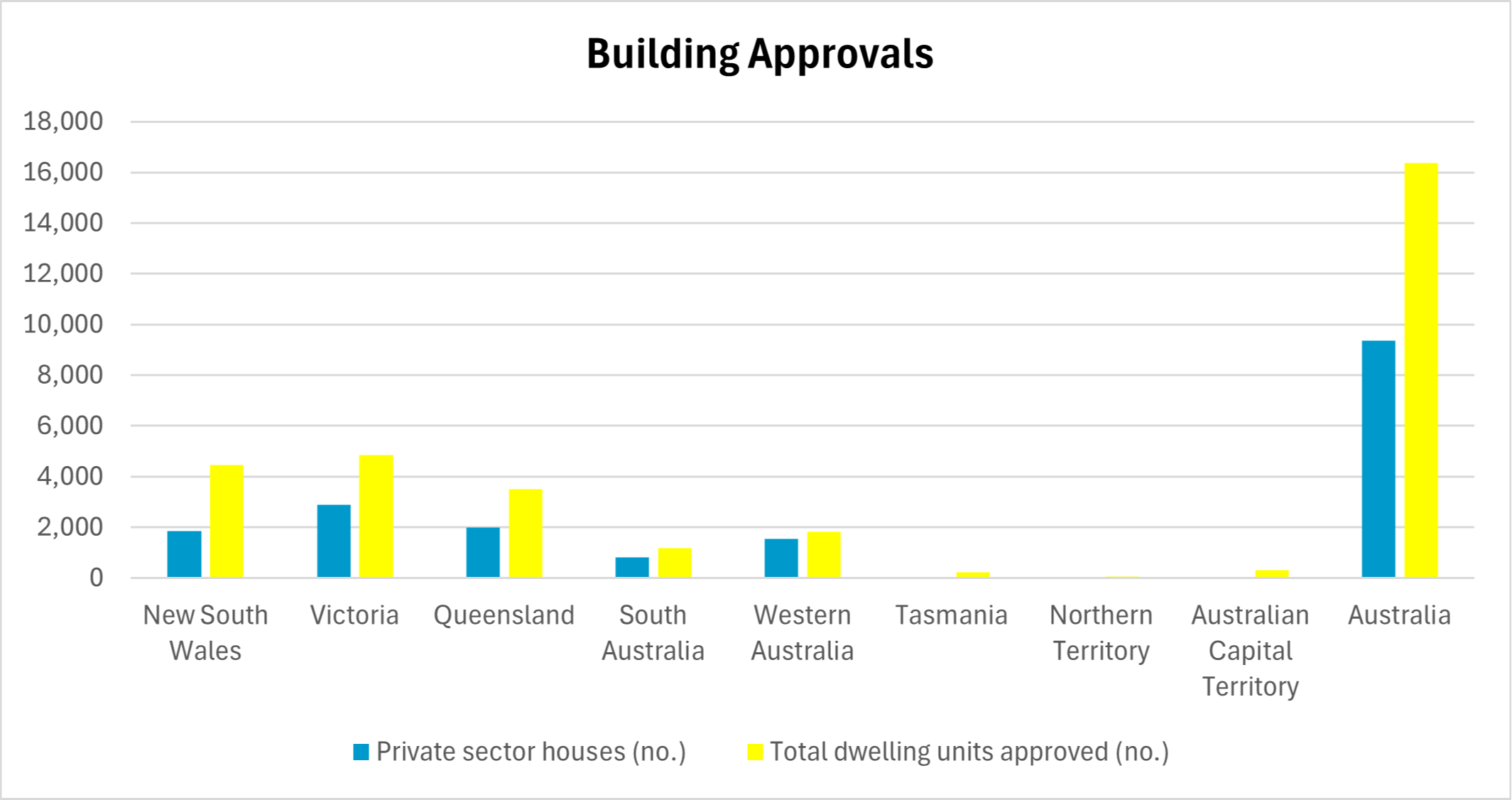
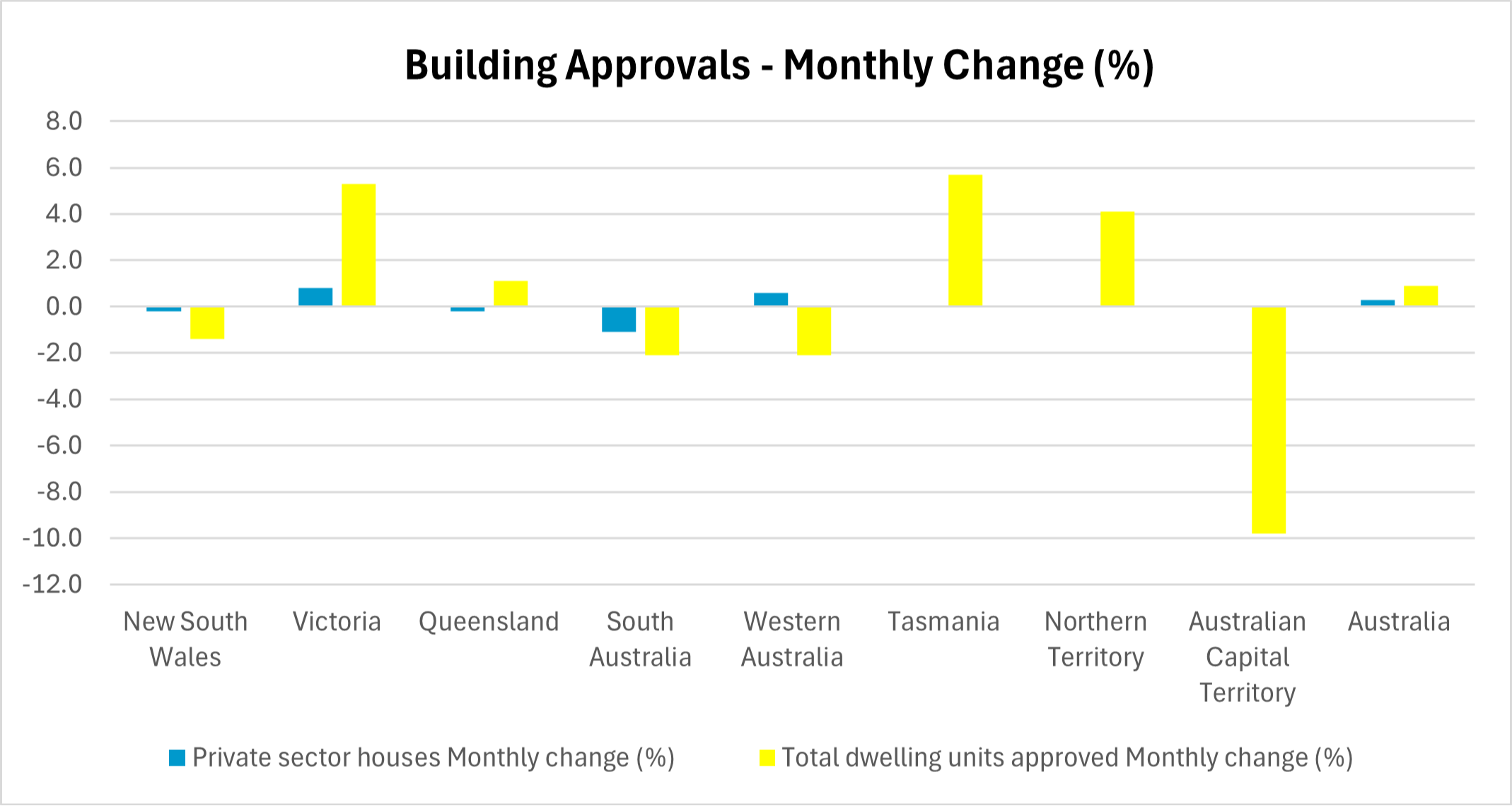
RBA Cash Rate (Interest Rate)
3.60%
Australian Dollar
1 AUD = 0.65 USD
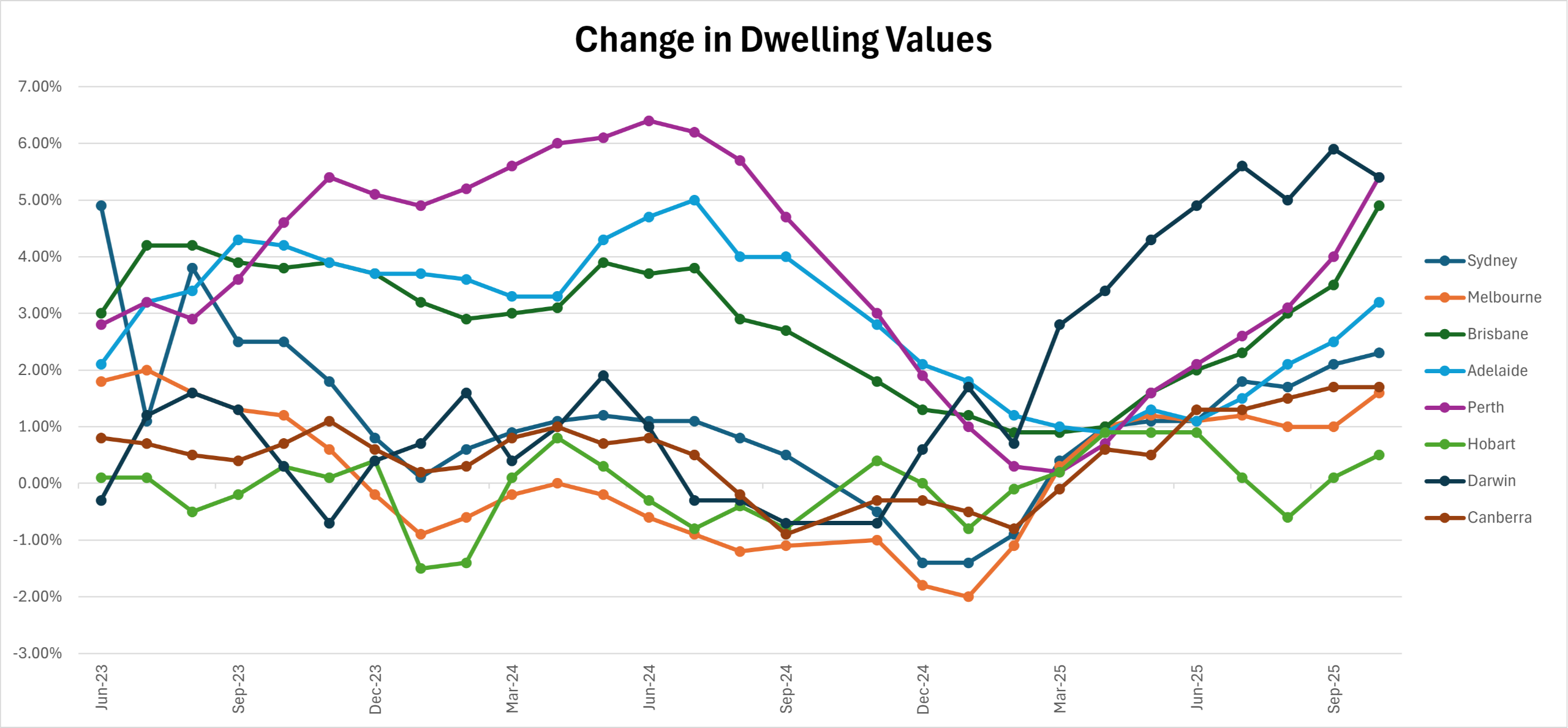
Dwelling Values Trend Line
The graph above shows the price trend line for houses and units combined. While this information is useful, it’s important to remember to look at pricing at suburb level and review pricing for your specific property type in order to identify opportunities and know what price to offer for your next purchase.
Looking at the combined data it was another solid month for dwelling values, with Perth maintaining its lead at 1.9% growth, closely followed by Brisbane at 1.8%. Darwin continued its upward run with a 1.6% rise, while Adelaide recorded a healthy 1.4%. Melbourne and Sydney posted more moderate gains of 0.9% and 0.7% respectively, and Canberra edged up by 0.6%. Hobart saw the smallest lift at 0.3%, though remained in positive territory. The consistent gains across most capitals reinforce a steady finish to the year, with underlying demand and limited quality stock keeping prices supported despite broader economic uncertainty. Of course the media is hyping that Melbourne is ‘growing faster than Sydney’ but you can see there’s not much in the difference and Melbourne is coming off around two years of negative growth.
FORECAST : This month marks the eighth consecutive month of price gains, continuing the upswing that began in February 2025 when the RBA announced its first rate hold after a string of increases. This means 2025 will go on record as a high-performing year across both the housing and unit markets.
That momentum, however, is about to be tested. The latest inflation figure jumped 1.3% to 3.2%, prompting the RBA to keep rates on hold for November. Market watchers are beginning to predict the possibility of another rise, which could place pressure on buyers who stretched themselves in recent months. While we’ll soon turn our attention to the 2026 outlook, for now the expectation is a steady but more measured market in the lead-up to year-end.
Negotiation leverage is likely to tilt back toward buyers. Agents can no longer rely on the Home Guarantee Scheme to drive urgency, sellers will be keen to secure a result before the Christmas shutdown, and buyer activity will gradually taper as people shift focus to the holidays. For those still looking to buy, the next few weeks could offer a valuable window and a chance to make a well-timed move before the market takes its summer pause.
In order to win and successfully purchase your ideal property, make sure you have your finances in place so you can negotiate with power. If you would like some help with the search, selection, assessment and negotiation of your purchase, book in for a Property Clarity Discussion.
If you’re looking for a more detailed review of the market or how it will play out for your particular situation, check out the information below.
Discover the insights from Australia’s leading property market experts as we review and analyse the latest SQM Research 2026 Boom & Bust Report. In this episode, we unpack SQM’s unique multi-scenario forecasting for 2025 and 2026, compare major city growth projections from SQM, Domain, Westpac, and ANZ, and discuss the driving forces behind market trends—interest rates, inflation, population growth, and the rise of regional markets. We also offer practical tips for buyers, explain how government policy and supply constraints are shaping the landscape, and provide exclusive strategic perspectives from the frontline of property. Whether you’re an investor or homebuyer, get the context you need to make informed decisions in 2026. Tune in and subscribe for more expert insights!
For more information
Contact Scott - message him on (m) 0406070005 or https://www.facebook.com/scotthochgesang.propertycoach
Contact Deb - https://www.propertyfrontline.com.au/...
Access the 2026 SQM Boom Bust Report - https://sqmresearch.com.au/boombustreport.php
How We Help
From strategy, through to assessment and purchase of your ideal property - we're here to make your property journey successful and stress-free.
We'll help you :
✅ know what and where to buy
✅ search, negotiate and acquire your property
✅ know what to do next.
How it works

Reach out to us
Book in for a chat
Book in for a chat

Get clear on your next steps
Together we will map out the best way forward

Relax while we do the heavy lifting
From here we'll do the heavy lifting for you and put your plan into action


